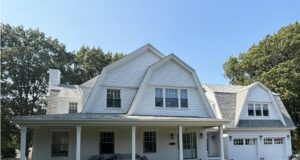IBHS Reminds Home and Business Owners to Take Action Before A Major Hurricane Strikes
Tampa, FL – June 7, 2013 – (RealEstateRama) — Less than one week into the 2013 Atlantic Hurricane Season the first named storm – Andrea – is bringing tropical weather conditions to the Tampa Bay area on a track toward the eastern United States. With the “A” storm under our belt, the Insurance Institute for Business & Home Safety (IBHS) is reminding Tampa Bay residents to take action to prepare their homes or businesses for what is expected to be an active storm season.
While Andrea does not appear to have caused major damage so far, the next storm could be much more serious. Everyone living in a hurricane-prone area should have a system in place to protect their windows and doors, such as shutters, according to IBHS. The strength of the roof, the health of trees, and the overall condition of a home or business also are major factors in how well a structure will hold up during a hurricane.
There are five ways home and business owners can reduce damage from a hurricane.
1. Seal and secure the roof: When was the last time your roof was inspected for damage? Wind and heat can really take a toll. See the IBHS Roofing Resources Page if you need to repair or replace your roof or hire a roofing professional. Watch this video to find out why Strong Roofs Matter.
2. Protect openings in exterior walls: Choose permanent window and door protection, or install permanent fasteners before the next storm and pre-cut shutter panels so they can be quickly put in place. If you do not have shutters and it’s too late to get professional installation, see the IBHS Guide to Using Plywood.
Video footage of windstorm testing at the IBHS Research Center, where engineers are working to develop solutions to help properties better withstand hurricanes, shows what really happens to properties during a storm. This video of commercial wind testing shows how once the window was broken in the brick building on the left, the exterior wall quickly collapsed due to wind forces. This video of residential wind testing shows how once the front door of the house on the left was forced open by high winds, the entire house collapsed due to wind pressures that built up inside. Download the IBHS Shutter Selection Guide to find permanent window and door protection options.
3. Seal openings, cracks and holes: As your property ages, cracks and holes can form around windows, doors and utility boxes. Seal these with inexpensive waterproof caulk to prevent wind-driven rain from entering the building.
4. Strengthen soffits: Did you know 70% of homes with damage due to Hurricane Charley lost soffit materials? Proper installation will keep the soffits attached and water out of your attic. See the IBHS Guide to Securing Soffits.
5. Limit potential flying debris: Landscaping materials, such as rocks, and yard ornaments can be picked up by high winds. Use soft materials, such as shredded bark, as mulch and bring in yard ornaments and patio furniture if a storm threatens. Take a look at your trees. Do branches overhang the roof or are shrubs overgrown near windows? These can both cause major damage during high winds. Trim them yourself or contact a tree-trimming or landscaping service.
For more information, visit disastersafety.org/hurricane.
About the Insurance Institute for Business & Home Safety (IBHS)
The Insurance Institute for Business & Home Safety is an independent, nonprofit, scientific research and communications organization supported by the property insurance industry. The organization works to reduce the social and economic effects of natural disasters and other risks on residential and commercial property by conducting building science research and advocating improved construction, maintenance and preparedness practices.
Contact:
Kenya Woodard
(813) 675-1053 (o) (813) 486-6372 (c)
Insurance Institute for Business & Home Safety
Twitter: @disastersafety














